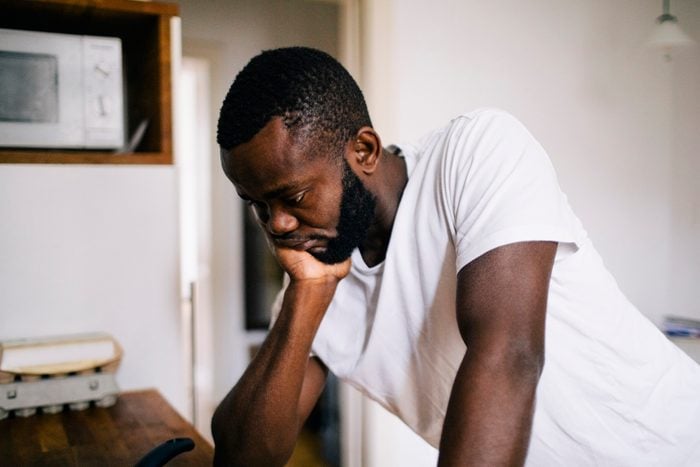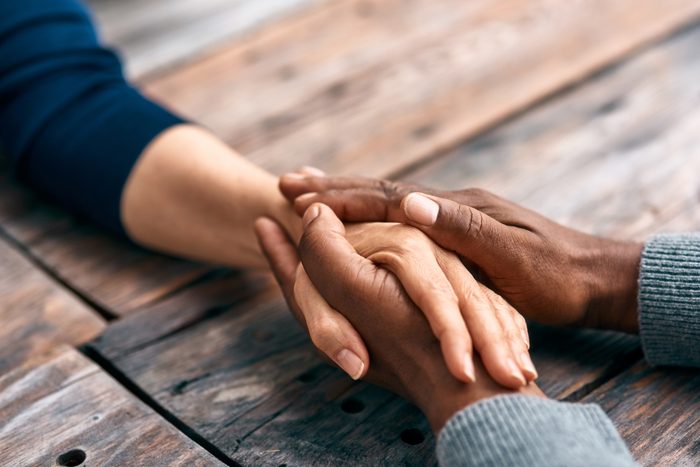
In his recent interview with Men’s Health magazine, actor Zac Efron’s agoraphobia diagnosis received attention…and offered a courageous peek past some common stigmas and misconceptions about this often-debilitating mental health condition. While it’s classified as a type of anxiety disorder, agoraphobia often gets confused with conditions like social anxiety. For example, the pandemic exacerbated mental health issues for many, explains Josh Estrin, PhD, a clinical therapist. “We became concerned about getting sick, but we also forgot a lot of our social skills,” he says. So it’s been a challenge for many people to re-learn how to handle themselves in social situations or adapt to other aspects of day-to-day life…a phenomenon some specialists are calling “re-entry anxiety“.
This increase in general anxiety is significant—the World Health Organization (WHO) estimates rates of depression and anxiety are up by a whopping 25%. But while anxiety about social interactions is certainly a challenge, it differs from what someone experiences when they have agoraphobia. The distinctions for understanding each condition and treating them are important.
Get The Healthy @Reader’s Digest newsletter
What is agoraphobia?
There’s generalized anxiety, Dr. Estrin explains, adding: “And then as it gets more intense and focused as an anxiety disorder, that’s when we get into [conditions] like agoraphobia.”
Tynessa Franks, PhD, a clinical psychologist, defines agoraphobia as a fear of being in a place or situation from which you cannot easily escape. This can involve fearing the onset of a panic attack—and being unable to get away when it occurs—or feeling helpless in situations that trigger extreme anxiety. As a June 2022 Case Western Reserve University paper put it: “Individuals with agoraphobia, therefore, strive to avoid such situations or locations.”
As with most mental health conditions, there’s no hard-and-fast way to diagnose agoraphobia. However as a starting point, Dr. Franks points to the Diagnostic and Statistical Manual of Mental Disorders, Fifth Edition (DSM-5)—the handbook of the psychology and psychiatry fields. She says that most people with agoraphobia experience intense fear in response to at least two of the following situations:
-
Using public transportation
-
Being in open spaces
-
Being in enclosed spaces, like a grocery store or movie theater
-
Standing in line or being in a crowd
-
Being outside the home alone
It’s not necessarily about the interactions or experiences you may have in these situations, either. For example, someone with social anxiety might fear communicating with other people—and the potential for embarrassment or judgment. “Agoraphobia is more about a fear of not being able to get out of the literal situation itself,” Dr. Estrin says, comparing the sensation to feeling trapped. “Logically, people can look at the doors and recognize the exit—and that’s why a lot of times [agoraphobia] is misunderstood,” he says. “But it’s this feeling that, for some reason, you’re trapped, and if something should happen, you can’t get out.”
Can You Use Melatonin for Anxiety? Here’s What You Should Know

What causes agoraphobia?
The DSM-5 organizes the causes of agoraphobia into three branches:
-
Temperamental: a sensitivity to anxiety or existing anxiety disorders
-
Environmental: negative or traumatic experiences
-
Genetic or physiological predisposition
“[Agoraphobia] can weave itself into the fabric of the human psyche from experiencing stressful or traumatic life events,” Dr. Estrin explains. Often, some sort of abuse, attack, or the death of a significant person in someone’s life can trigger agoraphobia—causing an individual to feel paralyzed in the face of certain situations (or going out altogether) for fear of finding themselves in the same scenario and being unable to handle it. That’s why agoraphobia often (but not always) overlaps with other conditions like post-traumatic stress disorder (PTSD) or panic disorders.
However, agoraphobia can manifest from a seemingly non-eventful experience into a debilitating behavior, says Laurie Singer, LMFT, BCBA, a licensed psychotherapist. “The spiral into an anxiety disorder like agoraphobia begins with a slow arc,” she says. “At first, it may disguise itself as sensible caution or a reasonable concern—but by the time it deteriorates into a debilitating situation, the behavior itself takes on a life of its own.”
Some people with agoraphobia experience near-constant worry about the next panic attack, Singer says. “It’s the anticipation of getting a panic attack that creates more anxiety.” On the other hand, some people get triggered by specific stimuli, and their agoraphobia can be situational. “For example, an individual might be walking on the sidewalk at noon going to a coffee shop and imagine being hit by a car—the thought will create anxiety which leads to the individual developing a fear of walking on the sidewalk,” she says. “Even though it’s based on an irrational thought, the person will no longer walk on the sidewalk at that specific time of day.”
The 16 Most Life-Changing Health & Wellness Books of 2022, Say Therapists and Readers

Can agoraphobia be cured?
Agoraphobia falls on the continuum as a mood disorder, Dr. Estrin says. And the good news is that, like most other anxiety disorders, it’s highly treatable. Estimates suggest about one-third of people with agoraphobia overcome their symptoms, while many more may still experience anxiety but learn to effectively manage the condition in their daily lives.
The key is to take steps to confront the disorder to undo the anxiety’s cyclical nature. “Individuals with agoraphobia, or many forms of anxiety, will typically analyze a situation over and over with a distorted sense of reality,” Singer says. “They often continue to explore the situation and try to rationalize their irrational thoughts,” which morphs into a continuous cycle over time. “There’s no benefit from these typres of cycles, but they will often continue until the individual gets the help they need.”
Think you’d benefit from working with a therapist? Here are 9 signs therapy could be a life-changing opportunity
Follow the Healthy on Facebook, Instagram, and Twitter. Live better—keep reading:
